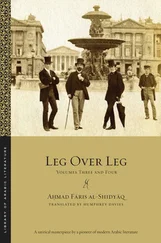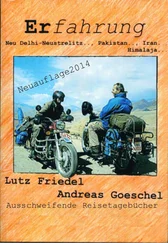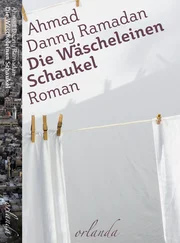Omair Ahmad - Delhi Noir
Здесь есть возможность читать онлайн «Omair Ahmad - Delhi Noir» весь текст электронной книги совершенно бесплатно (целиком полную версию без сокращений). В некоторых случаях можно слушать аудио, скачать через торрент в формате fb2 и присутствует краткое содержание. Город: New York, Год выпуска: 2009, ISBN: 2009, Издательство: Akashic Books, Жанр: Детектив, на английском языке. Описание произведения, (предисловие) а так же отзывы посетителей доступны на портале библиотеки ЛибКат.
- Название:Delhi Noir
- Автор:
- Издательство:Akashic Books
- Жанр:
- Год:2009
- Город:New York
- ISBN:978-1-933354-78-1
- Рейтинг книги:3 / 5. Голосов: 1
-
Избранное:Добавить в избранное
- Отзывы:
-
Ваша оценка:
- 60
- 1
- 2
- 3
- 4
- 5
Delhi Noir: краткое содержание, описание и аннотация
Предлагаем к чтению аннотацию, описание, краткое содержание или предисловие (зависит от того, что написал сам автор книги «Delhi Noir»). Если вы не нашли необходимую информацию о книге — напишите в комментариях, мы постараемся отыскать её.
Brand-new stories by
Delhi Noir — читать онлайн бесплатно полную книгу (весь текст) целиком
Ниже представлен текст книги, разбитый по страницам. Система сохранения места последней прочитанной страницы, позволяет с удобством читать онлайн бесплатно книгу «Delhi Noir», без необходимости каждый раз заново искать на чём Вы остановились. Поставьте закладку, и сможете в любой момент перейти на страницу, на которой закончили чтение.
Интервал:
Закладка:
Cull
by Manjula Padmanabhan
Bhalswa
The slender black police transport sprang into the sky above headquarters, then shuddered to a halt in midair. Dome, mission-commander of the two-man team inside the vehicle, frowned as he punched the com-link on his helmet. A vacant hiss greeted him.
“Transmission failure?” he wondered out loud. “I’m raising clean air.”
Mission coordinates from the dispatchers were normally fed simultaneously into the commander’s helmet and to the transport vehicle’s self-guiding system.
But today, silence.
Dome stabbed at the com-link button repeatedly.
Blank.
“Oh, come on, come on,” muttered Hem, copilot. “We’re losing time...”
In Dome’s three years of airborne service he had never yet been dispatched without directions. Finally — a couple of squawks in his earphone and— “What?” Dome swung around to face Hem. “Can you believe this? They’re asking for a visual search!”
Hem groaned, though he took the precaution of covering his mouthpiece with his hand. Profanity, even to the extent of rude noises, was strictly forbidden amongst uniformed officers. “We’ll never find the sucker.”
“Apparently the call came over some sort of outdated radio device—” Dome listened to the dispatcher’s voice squeaking in his ears, trying to make sense of what he heard “—reception garbled... just the name: Golden Acres.” He glanced toward Hem. “Ever heard of it?”
The copilot shook his head, scowling. “Nah,” he grunted.
Directly beneath them was the gigantic administrative complex known as the Hub. It served as the absolute nerve center of Dilli Continuum, glittering capital city of the economic behemoth of Greater India that sprawled across the whole of South Asia. The six-lane avenue called Rajpath that had once stretched from the presidential palace in the west to the national stadium in the east had been replaced by a long straight block of buildings four stories high. It was crossed by a matching block at its midpoint. From the air, the combined blocks of the Hub looked like a colossal plus-sign.
Nothing now remained of the old white-walled bungalows of the past, the hexagonal roundabouts, the graceful tree-lined avenues. The presidential palace along with all historical monuments, including ancient forts and tombs, had been dismantled and rebuilt in vast underground museums.
The Hub bristled with dish antennae and the long whiplike lances of directional audio-scopes. Flat green lawns provided a boundary between the structure and its parking vaults. A battalion of employees moved in and out of the place in four daily shifts, ensuring that it remained awake and operational twenty-four hours a day, year in, year out. The strictly linear grid of streets that contained and defined the city originated from this central location.
“It’ll take forever, ” snarled Hem. “Do we even know what to look for?” Pilots were encouraged to compete for the fastest response times. Weekly and monthly bonuses were awarded on the basis of nanosecond differences in their scores.
“An area of desolation is what we need to find,” said Dome, repeating what he’d heard over his earphones. Now he pulled down his helmet visor, reading information off its glow-screen. “No solid structures. No roads. No landmarks... Wait... incoming images... hmmm. Dense smoke haze. Can’t see much through that . Okay, they’re saying to head north and east — the caller will send up a flare five minutes from now.”
Precious minutes spilled from Hem’s time-cache as the transport hummed high above the taut regularity of the city’s streets below. In every direction beneath them the rigid graph that originated at the Hub had wholly replaced the tangled web of the old city’s narrow streets. Avenues met at precise right angles and at every intersection artificial cherry trees in permanent full bloom had taken the place of dusty neems and soaring silk cottons of the past. Surface vehicles were regulated by magnetic strips embedded in the road surface. From the air the neat rows of residential buildings looked like identical wooden blocks, color-coded by locality.
“It’s some kind of dump,” said Dome, listening to the dispatcher. “The world’s largest — two thousand acres — occupied by squatters...”
It was difficult to make sense of the information. How come he’d never heard of it? How could such a vast area have gone unregulated and unreported to the extent that its coordinates weren’t available to dispatchers? What was the meaning of such obscurity?
Four minutes passed before the transport was hovering above a cloud of pollution that blanketed the area like a thick gray lid. The machinelike regularity of the city’s streets had ended abruptly at what looked like a wall or a moat, zigzagging at sharp angles. Beyond it was the fog.
“It’s been used as a dump since the mid — twentieth century,” said Dome. “Used to be on the northern-most boundary of the city... along some kind of ancient highway — G.T. Road, they used to call it, stands for Grand Trunk — and a bog or a lake called Bhalswa...”
While the modern Continuum had developed southwards, the northern dump had become a lawless, cancerous wasteland. Its residents were declared illegal squatters but were too numerous to be moved out by force. Rather than risk the disapproval of their international business partners, the government had chosen the alternative of maintaining the dump as a ZZ: a Zero Zone. They suppressed all information going in or coming out of the area while leaving the inhabitants severely isloated. In an operational sense, the sector did not exist.
“That’s the flare,” said Hem, pointing toward a flash of pink light that fountained up above the murk.
“Yes,” said Dome, “set me down there.”
He, like Hem, wore full-body protective armor. It was designed to protect the wearer against all foreseeable threats, mechanical or chemical. Hem positioned the transport above the locator flare as the mission commander descended from the transport on a steel cable attached to his suit.
The air had the consistency of thin gruel, stirred by the gale from the transport’s whirring rotor. Dome wondered, as the murk enfolded him, if his helmet’s air filter would be overwhelmed. It was equipped to process and neutralize gas attacks but not such dense concentrations of airborne particulate. He was trained to suppress all emotions and reactions, yet his nerves were twitching and a bead of sweat trickled down his forehead. He hated to acknowledge these signs of weakness, minor though they were.
Then his feet touched down and he went into a defensive crouch, automatically scanning and processing information.
On the ground, a taser.
Beside it, a body.
The taser’s handgrip glowed cherry-red in the heat scanner Dome wore as a monocle clipped to his visor, over his left eye. The red glow meant that the weapon had been handled very recently. Yet its muzzle appeared blue and cold in the heat scanner: Whatever the cause of death, it hadn’t come from this small weapon.
Visibility was low. Air unbreathable. Operational area flat, open, a circular clearing forty feet in diameter and — Ah.
There was someone else present. A man.
Dome straightened up, his movements slow and deliberate. Civilians were known to be nervous in the presence of the tall crisis-response officers in their gleaming body suits.
From the man’s string-vest, loose khaki shorts, and bare feet, Dome guessed that he was a resident of the Acres. Dress codes elsewhere in the city were as strict and formal as the building regulations, with low tolerance for bare skin. The man was short, wide, and wiry, his black hair close-cropped and his eyes set deep beneath a jutting brow. He was clearly unarmed and did not appear to be offering any threat.
Читать дальшеИнтервал:
Закладка:
Похожие книги на «Delhi Noir»
Представляем Вашему вниманию похожие книги на «Delhi Noir» списком для выбора. Мы отобрали схожую по названию и смыслу литературу в надежде предоставить читателям больше вариантов отыскать новые, интересные, ещё непрочитанные произведения.
Обсуждение, отзывы о книге «Delhi Noir» и просто собственные мнения читателей. Оставьте ваши комментарии, напишите, что Вы думаете о произведении, его смысле или главных героях. Укажите что конкретно понравилось, а что нет, и почему Вы так считаете.












